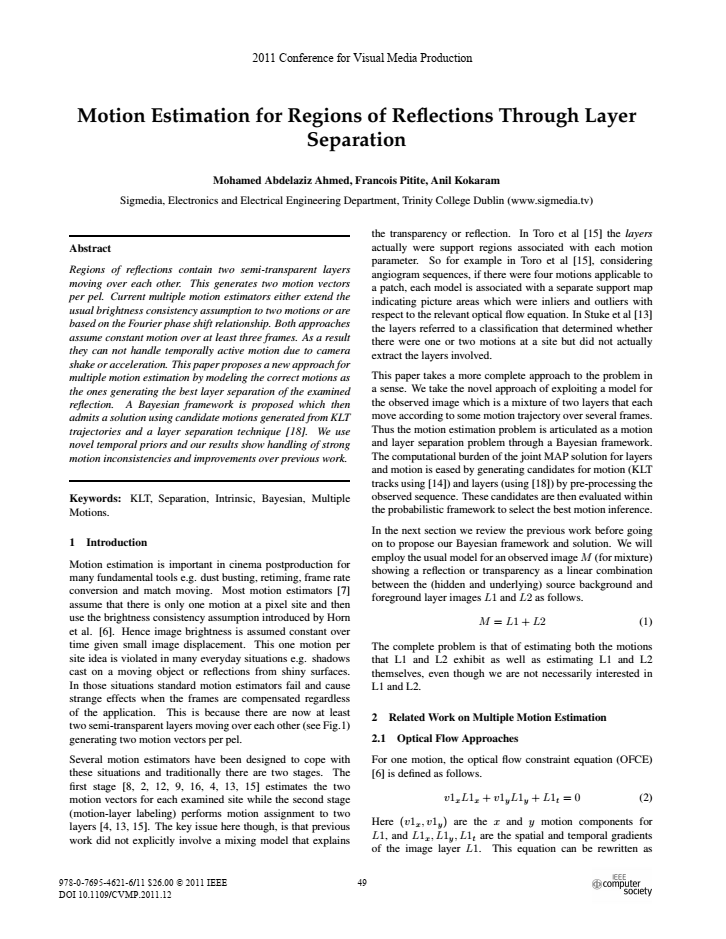Motion Estimation for Regions of Reflections Through Layer Separation
| Mohamed Elgharib1 | Francois Pitie1 | Anil Kokaram1 |
| 1TCD |

Regions of reflections contain two semi-transparent layers moving over each other. This generates two motion vectors per pel. Current multiple motion estimators either extend the usual brightness consistency assumption to two motions or are based on the Fourier phase shift relationship. Both approaches assume constant motion over at least three frames. As a result they can not handle temporally active motion due to camera shake or acceleration. This paper proposes a new approach for multiple motion estimation by modeling the correct motions as the ones generating the best layer separation of the examined reflection. A Bayesian framework is proposed which then admits a solution using candidate motions generated from KLT trajectories and a layer separation technique. We use novel temporal priors and our results show handling of strong motion inconsistencies and improvements over previous work.
 |
 |
| Paper | Video Results |
|
|
@InProceedings{elgharib11CVMP,
title = {Motion Estimation for Regions of Reflections Through Layer Separation},
author = {Elgharib, Mohamed and Piti{\'e}, Fran{\c{c}}ois and Kokaram, Anil},
booktitle = {ACM SIGGRAPH European Conference on Visual Media Production (CVMP),
pages={49-58},
year = {2011}
}
|